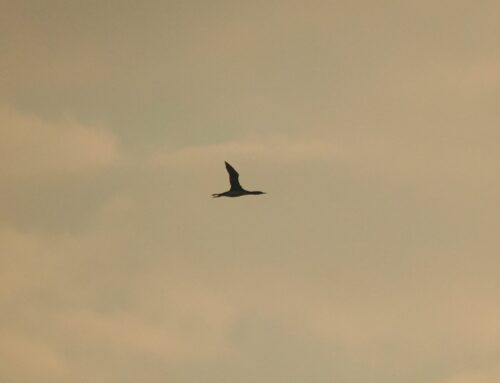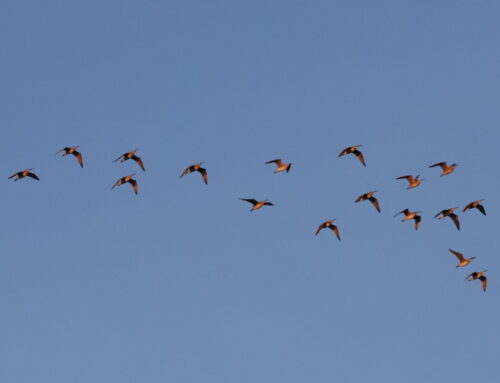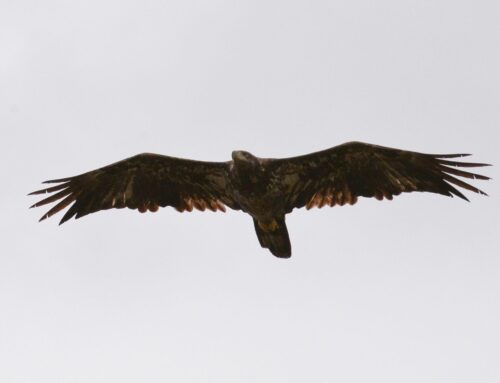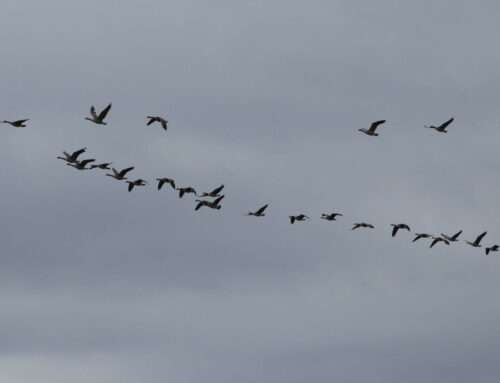Black coffee and bright wind maps: that’s how I start days, up here in Paradise. As I trace back towards the source of the colorful lines that flow past the Point, I imagine — and anticipate — the birds they might be ferrying. When this morning ritual is complete, I throw on my heavy layers and set off for the shack. To reach the Point from the field house is a short drive and shorter walk; last night, it snowed — this morning, mine were the first tires on the road, the first boots down the boardwalk. Out by the shack, Snow Buntings chattered in the beach heather; I smiled. Whitefish is welcoming me back in much the same fashion it sent me off last fall, with Snow Buntings and snow squalls.
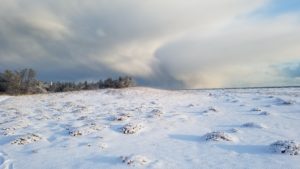
One of the many squalls at WPBO on April 16, 2020. Vilag photo.
This is my third consecutive season as waterbird counter, and it’s good to be back, so good. Once you’ve experienced the span of an entire migration here, you don’t really want to spend one anywhere else. Already, I’m anticipating the flights of Bonaparte’s Gulls and scoters that May has in store. But now, the season is early, the wind is strong and out of the north. When the count begins at sunrise, it might be a minute — to be precise, a few — before I see the day’s first merganser or goldeneye. But I don’t mind.
The quiet early season of the waterbird count is a gift, a space to regain lost competency in finding flying birds in a spotting scope. The slow days also present an opportunity to truly observe migration before the pace accelerates and tracking the numbers gets frenzied. For me, being out here on these sorts of days is a meditation: to make sweeping scans of the horizon; to follow the loon laboring into the headwind, progressing, but fighting for it; to track the harrier cutting through the snowflakes towards Lake Superior, where it will cross unhesitatingly; to stand in the presence of the powerful natural rhythm of migration and find needed reassurance that — even with things as they are right now — beauty and normalcy can still be found.
More than ever, I feel a conviction to share Whitefish Point’s waterbird count as best I can with those who cannot physically visit. I will post updates here weekly, eBird checklists daily and — as always — you can follow the count live on Dunkadoo. Please reach out if there is any other way we can bring the Point to you during this time of travel uncertainty.
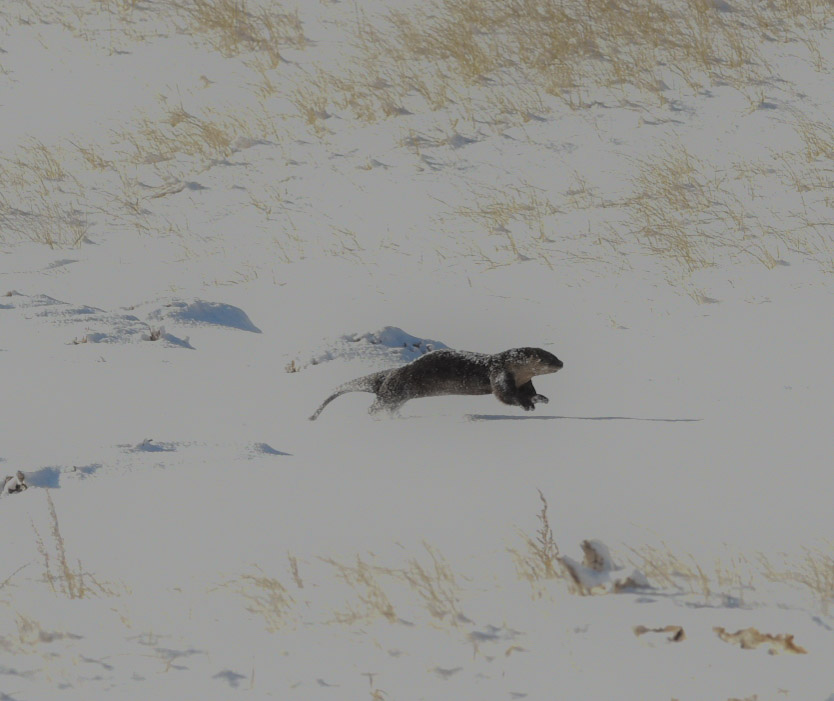
Otter lopes through the snow near the waterbird shack. Vilag photo.
The count’s been going for just three days now — not long enough for me to get a read past “very ready for some southerly winds.” But, so far, I’ve seen a few migrating Red-breasted and Common Mergansers, Common Goldeneye, and Common Loons each day. A couple Great Black-backed Gulls have been making the rounds. Canada Geese and Sandhill Cranes are moving in the greatest numbers — between the last two days, I’ve tallied 695 cranes, and by the time next week’s post is up, I expect they’ll have peaked. Last year’s date for that was April 20; 1,890 were recorded. However, the sighting that brought the most joy this week was not avian. Yesterday, a river otter paid me a visit at the shack! I’d never seen one at the Point before, and I hope it visits again. (Some prior WPBO counters have had gull friends…I’d be very alright with an otter friend.)
As always, thank you for reading.
— Alison Vilag, Spring 2020 Waterbird Counter.
Feature photo: Northern Harrier, Vilag.
If you are considering visiting the Point, please read this important message from Michigan Audubon and WPBO Field Staff.
Maneuvering the ever-changing implications of COVID-19 has necessitated constant adaptation and evaluation for us all. Michigan Audubon and WPBO have been proactive in taking measures that protect our staff, our physical community in Paradise, and the Michigan birding community, and we have found American Birding Association’s recent guidelines on birding and social distancing a useful resource for guiding bird-related travel decisions. While there are hopeful signs that we are rounding the corner with this virus, Michigan Audubon does not want to sow precocious optimism that encourages long-distance travel. Please take a minute to read these ABA guidelines, and to imagine them through the lens of the eastern Upper Peninsula, which does not have the medical resources of Michigan’s more-developed areas. Chippewa County and its adjacent counties have just three hospitals, and only one of these has more than 100 beds; they all are at least an hour’s drive from the Point. WPBO appreciates and requests your continued conscientiousness as the season’s migration begins to ramp up, and does not condone birding travel that is not local. Keep in mind that the Owl’s Roost Gift Shop and public observation of owl banding are currently closed. In the meantime, we will virtually share the Point with you as best we can until it is safe for all parties to enjoy it together. We hope that will be soon.


